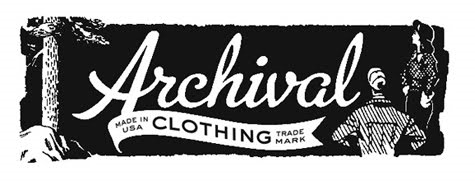
I bought my first bike messenger bag from De Martini/Globe Canvas in the mid 1990s. I had read about the De Martini bags, and the company's owner, Frank De Martini, a sail-maker by trade, in Bicycle Guide magazine. At the time, De Martini was supplying sturdy, affordable, canvas messenger bags to many of NYC's bike messengers. The company's shop was located in a basement on Mott Street in Little Italy. Orders were taken in person at the shop. Cash sales only. Bags in various stages of production were piled on the floor. I stepped over them to make my purchase.
Modern messenger bags have morphed into urban briefcases constructed from modern technical fabrics, w/complicated pocketing systems, plastic hardware, side-cam shoulder straps and special inserts for computers and business cards. In contrast, my original De Martini bag has a simple, elemental design. The bag is lined with bright yellow truck tarping that keeps out moisture and makes the contents of the bag more visible. I carry mine for postal deliveries in the rain. The heavy canvas duck exterior keeps out the elements and holds up well to use. I've owned this bag for 15 years and it only shows low level wear and tear.
Here's a partial reprint of a story on De Martini that ran in the NY Times on August 4, 1985
One Man's Art: Bags for Messengers
A street hatch opens onto a steep well of crooked stairs. Below, large spools of colored canvas lean against old tables and sewing machines, while flourescent lights vie for ceiling space with huge pipes. Scissors and awls lie about and pictures of schooners line the walls.
This is the underground shop of Frank Martini, the 76-year-old owner and sole employee of the Globe Canvas Company at 177 Mott Street. A sail maker by trade, he began making bicycle messenger bags 20 years ago. He has sold them wholesale to the more than 50 bike messenger services in New York ever since. No one else makes messenger bags, although some have tried.
''Everybody gets them from him,'' said Glen Janus, a spokesman for Streetwise, a messenger service that has used the bags throughout its 10 years of business. ''He's a legend.''
On Cyclists' Backs
While Mr. Martini labors below ground, his work hugs the backs of speeding cyclists above who appreciate how the bag conforms to odd-size parcels, adjusts to unevenly weighted loads and endures heavy rains. Wearing his bag over his shoulder, Giovanni Headley, a veteran messenger, said, ''If you take good care of it, it will take good care of you.''
Bag making, which began with a request from one of the first bicycle messenger services 20 years ago, has taken the place of sails and boat work as Mr. Martini's regular business. Though he has received orders from Airborne Air Freight, the people who post subway advertisements and Columbia Pictures, the bags are almost the exclusive domain of bicycle messengers.
''These kids need bags,'' Mr. Martini says. ''Without a bag these kids can't go to work.''
Many Buy in Bulk
Many messenger companies either buy the bags in bulk or have their messengers buy them from Mr. Martini. Some companies will hire only messengers who have their own bags.
''If I sell them to stores, they'll charge them $30 or $40,'' Mr. Martini says. ''That's highway robbery.'' Bags bought from him cost $20, a price that reflects the sympathy he frequently shows his young clientele. ''Most of their work goes toward tuition money,'' he says. ''I like that.''
Bag making is a study in fluid and frenzied craftmanship. Mr. Martini, slicing and sewing, can whip through several bags in about 20 minutes, stopping only to curse ancient sewing machines that cannot keep up with him.
The canvas is cut into sides. Then, tossing rulers out of his way and shoving a large L-shaped table against one of several sewing machines, Mr. Martini attaches a Velcro strip, the first seal, and, as a second seal, two buckles with straps. In short order, he fastens inner pocket, flap and shoulder strap. Every stitch is reinforced, often as many as nine times.
''There isn't much handwork done anymore,'' he says, looking at the finished bags. ''Everything's done by machines. I don't need them.''
READ MORE HERE




7 comments:
''Most of their work goes toward tuition money,'' he says. ''I like that.''
bought mine in 91' on Mott, on my first visit from Germany to NY. I live here now for 17 years and my bag is still around and in great shape!
Great post!
Excellent Post! The legacy of Frank DeMartini still lives at www.demartinibags.com Original designs, original materials, all made in USA.
Well I always love to hear about the local subculture of NYc
thanks! great piece! I still have mine bought from city bikes in DC in the early 90s. messengered with it for a few years. i must have a dozen bags, but still use the de martini and a zo bag of the same vintage most of the time. i don't think a decent messenger bag even begins to break in without a decade of hard use.
Nice! Just received new large size from demartinibags.com. Just like my old bag but better termination. Same heavy duty cotton canvas. Glad to see it's still in production.
Great post! Had my Globe bag in High School (Copley High Boston) and used it for 10 years - with and without my bike. A stolen Miyata I crashed in a car accident. The bag survived - duh!
Post a Comment